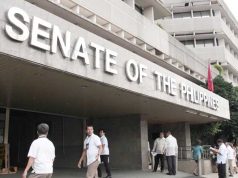Marawi struggles to recover a year after siege
IT WAS a year ago today, May 23, when fighting broke out between government forces and terrorists led by the Maute family in Marawi City, Lanao del Sur, which resulted in the destruction of the city and mass exodus of thousands of residents there by the end of the year.
The clashes in Marawi City prompted President Rodrigo R. Duterte to declare martial law in the whole of Mindanao. The President also issued Administrative Order No. 03 creating an inter-agency task force for the rehabilitation of Marawi and other affected localities.
Presidential Spokesperson Harry L. Roque, Jr. said in a press briefing on Tuesday morning that the Palace is “satisfied” with the ongoing rehabilitation of the city, noting that “70% of the residents” who evacuated have already gone back to their homes.
The spokesman likewise said Mr. Duterte is expected to visit Marawi for its first-year commemoration today.
Armed Forces of the Philippines (AFP) Spokesperson Edgard A. Arevalo said in a televised interview on Tuesday that the military has cleared at least “85% of the unexploded ordnance” in the city.
For his part, Joint Task Force Ranao deputy commander Colonel Romeo S. Brawner, Jr. said in his interview with DZBB that “clearing operations are still ongoing.”
BusinessWorld reported last Tuesday that the Swiss challenge period for Marawi’s rehabilitation has been scheduled to start “next week,” beginning “May 26.”
According to Housing and Urban Development Coordinating Council (HUDCC) Chairman Eduardo D. del Rosario, the city’s rehabilitation is expected to cost “about P77 billion over a period of four years.”
Mr. del Rosario likewise said in a radio interview that his agency is expecting that, within this year, “all evacuation centers will be closed and all of the evacuees will be housed in temporary shelters.”
According to the housing czar, the HUDCC has already constructed “around 1,000 temporary housing units” for the affected families.
For its part, the United Nations Children’s Fund (UNICEF) in a statement said more than 100,000 children remain displaced a year after the siege.
“Risks for children affected by the conflict are increasing, especially for young children becoming malnourished and school-age children being unable to return to school. UNICEF calls for a province-wide approach throughout Lanao del Sur to ensure that children and their families fully recover from the emergency,” the UNICEF said.
It noted that the situation of children in Lanao del Sur, one of the poorest provinces, “was among the worst in the country even before the conflict.”
“While recognizing the good progress made to assist over 40,000 families to return to their homes in Marawi City, many children’s lives are still far from returning to normal. A comprehensive approach is needed to focus not only on children from Marawi City but… children in all of the 39 municipalities in the province,” said Lotta Sylwander, UNICEF representative to the Philippines.
For his part, Autonomous Region in Muslim Mindanao Gov. Mujiv S. Hataman called on the Bangsamoro people to “stand united” and continue to be vigilant as the national government prepares to implement a major rehabilitation program in the city.
“The safety of our people lies not only in ensuring security against crimes and conflict, but in ensuring education for all — an education that is affirmed not only by our schools but by our communities. Peace and security is achieved not only through law enforcement and state offensives, but through constant dialogue that seeks to engage each and every Bangsamoro,” Mr. Hataman said in a statement.
“As we struggle and work towards rebuilding the city of Marawi, we must also strive to rebuild the foundations of local leadership and reestablish safe spaces for the most vulnerable in our communities,” he added. — Arjay L. Balinbin with Mindanao Bureau



